Anthropology Observation III ( Notes 83-111)
CAUTION for researchers - you may never find out truth. This is why.
No. 110
# Indigenous modern interpretation can be wiping off factual history. It stops you understand what actually happens.
Indigenous interpretation and Indigenous definition have values. We all agree and respect. Clear.
CAUTION for researcher aiming for truth.
WITHOUT adequately equipped knowledge and skills to identify loanwords- you may never know what actually happens.
Modern indigenous interpretations can be misleading and can be wiping off factual history. In other words - wiping off evidence.
Indigenous interpretation and Indigenous definition have values. We all agree and respect. Clear.
CAUTION for researcher aiming for truth.
WITHOUT adequately equipped knowledge and skills to identify loanwords- you may never know what actually happens.
Modern indigenous interpretations can be misleading and can be wiping off factual history. In other words - wiping off evidence.
 |
| 控溪吊橋 |
Hbun-Tunan 部落-秀巒/控溪 (姜秀鑾)
A Atayal case
I just remembered -
1. I actually have been to Tunan 秀巒/控溪 in 2016 en route to Smangus (French for Savages )
2. I am clear that Tunan is developed from 姜秀鑾(Hakka:Giong` Siuˇ-lan;1783—1846)who founded Da’ai 大隘 establishment in 1835) . Either from Siulan 秀鑾or Giong Siu 姜秀(aka 控溪).
3. I became acquainted with 姜秀鑾 descendants in 2018 and have firsthand information about Da’ai establishment and family.
4. FUNCTIONAL indigenous development
Atayal modern interpretations focus on FUNCTION to an extend removed factual history -
4-1. Tunan has become a “Atayal word” meaning marketplace. (Because that’s what people do there)
4-2. Hbun has become a “ Atayal word” meaning where rivers meet. (Because that’s what people see there)
5. Blue and Pink are truth origins. Yellow and Orange are modern interpretations.
6. Expect frequent inconsistencies in indigenous interpretations because after all they are “made-up” (harmless on most occasions).
7. Truth can only be revealed with adequate skill and knowledge to identify and validate loanwords.
No. 111 Horai =Taiwan  Take notes - 2 Saisiyat place names and 1 plains indigenous means ‘Horai’.
Take notes - 2 Saisiyat place names and 1 plains indigenous means ‘Horai’.  No need to keep making-up hypotheses and producing proposed etymologies with these indigenous names and phrases.
No need to keep making-up hypotheses and producing proposed etymologies with these indigenous names and phrases.
This time I have a different photo of original ‘Horai’ at Osaka.
 Take notes - 2 Saisiyat place names and 1 plains indigenous means ‘Horai’.
Take notes - 2 Saisiyat place names and 1 plains indigenous means ‘Horai’.  No need to keep making-up hypotheses and producing proposed etymologies with these indigenous names and phrases.
No need to keep making-up hypotheses and producing proposed etymologies with these indigenous names and phrases. Horai=Penglai=Taiwan
THAT'S IT!
No.109
Qaw for fish is not PAN.
It’s Chinese 鯝 or Taiwanese 苦。
This issue is (again) with Atayalic group.
‘Qaw’ fish photo one at Alishan (Tsou). The other at Xueshan (Atayal).
Flawed PAN (Proto-Austronesian) dictionary
The real issue is not building Formosan languages dictionary with contact languages and a mosaic of loanwords because ‘outside’ influences have been for centuries and that’s totally natural. And that’s Formosan languages.
The real issue is unidentified, unvalidated loanwords being ignored by Austronesian language linguists and continue to build PAN dictionary in a deceiving and misleading manner.
 lim 鯉 in 鯪鯉 |a-lim photo taken in Kyushu Japan
lim 鯉 in 鯪鯉 |a-lim photo taken in Kyushu Japan
The real issue is not building Formosan languages dictionary with contact languages and a mosaic of loanwords because ‘outside’ influences have been for centuries and that’s totally natural. And that’s Formosan languages.
The real issue is unidentified, unvalidated loanwords being ignored by Austronesian language linguists and continue to build PAN dictionary in a deceiving and misleading manner.
 lim 鯉 in 鯪鯉 |a-lim photo taken in Kyushu Japan
lim 鯉 in 鯪鯉 |a-lim photo taken in Kyushu Japan
No. 107
Atayal made-up ‘fertile land.’
You wonder why I became curious about Atayal ecology and etymology in particular in Syakaro and Smangus area while traveling in Japan.
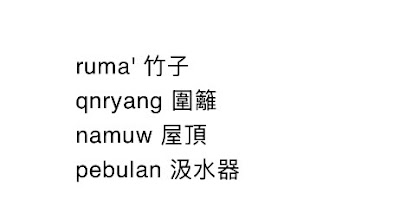.jpeg)
Smangus (French Savages)
Ko-raw (Japanese word for ‘Black’ Kuro)
No. 105
Before Japanese, Atayals draw/scoop water from river . Aka 汲水。
# Japanese introduced and taught Atayals the use of metal pipes and bamboo joints to redirect water for household supply.
# ie Before Japanese educated Atayals the knowledge and methods- Atayals collected water by drawing and scooping from rivers.
According to this Atayal elder - redirecting water using metal pipes and bamboo for household water supply was introduced and taught by Japanese.
Before Japanese, Atayals draw/scoop water from river . 汲水。
In 2016- I witnessed a group of Atayals at Smangus fixing the typhoon damaged bridge including installing metal pipes for household water supply - according to the elder - they learned it from the Japanese. Encouraged by the Japanese.
# ie Before Japanese educated Atayals the knowledge and methods- Atayals collected water by drawing and scooping from rivers.
According to this Atayal elder - redirecting water using metal pipes and bamboo for household water supply was introduced and taught by Japanese.
Before Japanese, Atayals draw/scoop water from river . 汲水。
In 2016- I witnessed a group of Atayals at Smangus fixing the typhoon damaged bridge including installing metal pipes for household water supply - according to the elder - they learned it from the Japanese. Encouraged by the Japanese.
No. 104
Atayal ecology and etymology
# First - Gong for River is Chinese loanword- most likely developed from 控溪 . Root most likely is associated with Hakka Da’ai 姜Giong . That’s how Atayal language revitalization works. Considerable impact from Da’ai 1835 establishment.
You wonder why I became curious about Atayal ecology and etymology in particular in Syakaro and Smangus area while traveling in Japan.
Compare the map of Miyama Kyoto and
‘Traditional Atayal ecology’.
There is a spiritual giant sacred tree, a watch tower, a shinto shrine, river, fishes and of course DEER (Syakaro).
Primary difference is church.
Smangus photos taken in 2016.
Now I understand how Indigenous cultural and language revitalization works. In this case - Atayal.
No. 103
Evidence of loanwords and result of indigenous interpretations
# Qalang Smangus =
Nation (Protected land) of Savages
Here is the evidence Qalang Smangus contains 2 loanwords-
1. Qalang (village. fence built from bamboo) is developed from bamboo.
# 圍欄 (alang) (*same with Amis)
2. Smangus very unfortunately is developed from French loanword ‘Savages’. Atayal made-up into ‘Fertile land.’
*Note - Amis has a similar case.
.jpeg)
No. 102
# Formosan languages do not equal (Proto) Austronesian languages
If Atayal language contains so many loanwords ( as evidence shows - although no one interested in acknowledging and validating ) by definition it is not Proto- Austronesian.
The claim is questionable. Without further Formosan languages analysis and validation.
Austronesian languages linguists are not interested in evidence of loanwords.
Austronesian Linguists are not interested in acknowledging and validating loanwords.
They rather produce endless proposed etymologies . If that’s what they are committed to do.
# Formosan languages do not equal (Proto) Austronesian languages
If Atayal language contains so many loanwords ( as evidence shows - although no one interested in acknowledging and validating ) by definition it is not Proto- Austronesian.
The claim is questionable. Without further Formosan languages analysis and validation.
Austronesian languages linguists are not interested in evidence of loanwords.
Austronesian Linguists are not interested in acknowledging and validating loanwords.
They rather produce endless proposed etymologies . If that’s what they are committed to do.
Truth will come out one day.
Atayal and Bamboo loanwords
# Examples of how indigenous interpretations (revitalizations) is done - based on loanwords.
No. 101
# Typical Indigenous Interpretation
# Typical Indigenous language revitalization
# Atayal
Typical indigenous (Atayal) interpretation of loanwords.
In the case of Bamboo.
First you should understand-
Ru-Ma (Atayal Bamboo)
= Bamboo-Makino
Mandarin-Latin (Phyllostachys makinoi)
Here a page of typical indigenous interpretations based on bamboo -
All these are loanwords developed from bamboo.
They all contain the loan root word bamboo 竹。
For example-
1. Cup is to collect water 汲
2. Village - fence - built from bamboo
3. Roof is from bamboo
4. Water pump is made from bamboo
 it is also clear from the Atayal elder - collect water 汲水 is introduced by Japanese.
it is also clear from the Atayal elder - collect water 汲水 is introduced by Japanese.
- Therefore - the word for cup did not exist before Japanese.
# Examples of how indigenous interpretations (revitalizations) is done - based on loanwords.
No. 101
# Typical Indigenous Interpretation
# Typical Indigenous language revitalization
# Atayal
Typical indigenous (Atayal) interpretation of loanwords.
In the case of Bamboo.
First you should understand-
Ru-Ma (Atayal Bamboo)
= Bamboo-Makino
Mandarin-Latin (Phyllostachys makinoi)
Here a page of typical indigenous interpretations based on bamboo -
All these are loanwords developed from bamboo.
They all contain the loan root word bamboo 竹。
For example-
1. Cup is to collect water 汲
2. Village - fence - built from bamboo
3. Roof is from bamboo
4. Water pump is made from bamboo
 it is also clear from the Atayal elder - collect water 汲水 is introduced by Japanese.
it is also clear from the Atayal elder - collect water 汲水 is introduced by Japanese.- Therefore - the word for cup did not exist before Japanese.
No. 100
 Japan inspired 2025
Japan inspired 2025
 Deer Land etymology
Deer Land etymology
1. Syakaro(Skaru)
2. Seediq
3.Truku
 Japan inspired 2025
Japan inspired 2025 Deer Land etymology
Deer Land etymology1. Syakaro(Skaru)
2. Seediq
3.Truku
4. Amis (paper mulberry is deer tree in Hokkien)
 鹿 Shika
鹿 Shika 鹿 lok (Hokkien)
鹿 lok (Hokkien) Notes 83-100 are Japan inspired.
Notes 83-100 are Japan inspired.They were done on most occasions 'at intervals' during my last 2025 Japan trips - at walking, transporting, or between eatings and waitings. whenever and wherever.
I posted them literally ‘on the spot’ to FB conveniently for the record - save them for a chance to update on this blogpost.
(Awaiting updates - currently on No. 82)
What strikes me most and which inspire me to knock out Notes 83-100 is deer etymology and indigenous interpretations in Alishan and Jade Mt areas.
Indigenous interpretations are valuable because they often give indications and implications of how these terms developed and in particular useful for locals to understand and relate to daily life. Indigenous locals need to understand in order to put into practice and pass onto generations.
HOWEVER - random made-up such as Smangus (Indigenous interpretation - Fertile land. God's tribe) from French word "Sauvages" for Savages is not only pointless but harmful. This kind of random made-up is to be discouraged and discontinued. Before they become 'permanently' harmful.
Note - some of these posts may appear repetitive developed from the same subject matter. But rest assured they are NEVER exactly the same. A new entry is made because there is something 'new' worthy of a follow-up.
Photos @ Kyoto prefecture. 2025
No.99 &91
fuki (Petasites japonicus)
Fuki 款冬sweets in Alishan (Japanese introduce) - Documented in “阿里山物語”。
That’s the Fuki sweets 富吉 once common in Alishan confectionery shop.
Fuki 款冬 has since become a Seediq tradition. The other obvious Japanese influence is Seediq/Truku bucket rice. This food name is borrowed from Japanese meaning ‘cooked rice’.
That’s the Fuki sweets 富吉 once common in Alishan confectionery shop.
Fuki 款冬 has since become a Seediq tradition. The other obvious Japanese influence is Seediq/Truku bucket rice. This food name is borrowed from Japanese meaning ‘cooked rice’.
 Kyoto inspired
Kyoto inspired I believe Seediq and Truku names are developed from Sika deer
I believe Seediq and Truku names are developed from Sika deer  (Japanese word for deer).
(Japanese word for deer).No 98
Bunun Seediq Truku ‘human’ ‘people’
(1930 and 2000)
(1930 and 2000)
# indigenous modern interpretations ( I can only think it’s modern because there is no evidence of otherwise)
 Bunun language “pu't or puh means Taiwan” (1930)
Bunun language “pu't or puh means Taiwan” (1930)I see ….
Bunun language “Bunun” means people (2000) indigenous interpretation
 In which case - there is a good chance Seediq derived from Sika deer (Japanese) now after indigenous interpretation becomes again ‘people’.
In which case - there is a good chance Seediq derived from Sika deer (Japanese) now after indigenous interpretation becomes again ‘people’. As well as Truku- derived from ‘deer place' 鹿窟.
As well as Truku- derived from ‘deer place' 鹿窟.I think - there is a good chance . Yes.
“今天台灣各原住民族的名稱,都是以他們語言當中稱「人」
No. 97
Tao flying fish ritual
招魚祭(rayon)(MIVANWA)
白鰭飛魚 Sosowowon
 The last syllable is likely a loanword (Chinese/Japanese) meaning fish.
The last syllable is likely a loanword (Chinese/Japanese) meaning fish.  Ago 阿戈 あご is Japanese referring to the jaw of the flying fish.
Ago 阿戈 あご is Japanese referring to the jaw of the flying fish. No. 96
# Tao 白翅飛魚Sosowoen
This flying fish word different from most others (of Tao flying fish variety) - very likely contain a loanword meaning ‘fish’ - ‘woen’ ‘uo’ 魚
In Japanese, "flying fish" is tobiuo (トビウオ).
I didn’t know there is a historical flying fish tradition in Japan until I saw this exhibition of ‘Ancient Shimane’ ( Birthplace of Japan’s mythology)
In Japan, "ago" (顎) refers to flying fish, specifically the Cheilopogon agoo species, which is a type of flying fish known for its long gliding flights out of the water. The word "ago" is also used in some dialects around Nagasaki to refer to flying fish.
# Fuki 款冬/石蕗 short mystical creatures
# Ainu and Seediq
# How Ainu short-people disappeared (rude with women)
# Ainu and Seediq
# How Ainu short-people disappeared (rude with women)
In the indigenous Ainu folklore of northern Japan and Hokkaido, fuki leaves were believed to provide shelter for mythological creatures. They are skillful fishermen and hunters.
Seediq who embraced Fuki tradition (introduced by Japanese) also has a short people tale (literally called pigeon peas borrowed from Chinese 樹豆). Short as peas.
Seediq also has a version that these peoples are so short that they live/hide under taro/fuki leaves.
That’s the most likely connections.
Photo @ Kyoto prefecture Himeji 姫路
No. 93 & 94
# Syakaro and Smangus
# Syakaro /Skaru means deer (Shika 鹿 Japanese)
# Smangus means Savages (French Sauvages)
Regardless a variety of academic or indigenous etymologies and interpretations ….
Smangus and Syakaro means THOSE above. I don’t believe they are anything else.
No. 92
# Alishan Little Japan (Seediq case x 2 )
Got it! Photos from Japan
Tokyo and Kyoto prefecture.
# Seediq bucket rice and # fuki stalk tradition are both Japanese introduced. Including of course their vocabulary.
# Alishan Little Japan (Seediq case x 2 )
Got it! Photos from Japan

Tokyo and Kyoto prefecture.
# Seediq bucket rice and # fuki stalk tradition are both Japanese introduced. Including of course their vocabulary.
No. 90
 Fuki ふき
Fuki ふき
A very Japanese plant .
Photos at Himeji park Japan
(In Taiwan- a more indigenous Seediq thing)
 Fuki ふき
Fuki ふきA very Japanese plant .
Photos at Himeji park Japan
(In Taiwan- a more indigenous Seediq thing)
New discovery! There were ‘Fuki sweets’ sold in Alishan during Japanese colonial. On records.
日語把菊科蜂斗菜屬的蜂斗菜稱作「蕗」,又把「款冬」
日語把菊科蜂斗菜屬的蜂斗菜稱作「蕗」,又把「款冬」
原來在日治時期,位於現在的阿里山沼平公園一帶,
No. 89
No. 87
# Brother and Sister creation of origins in mythology. They gave birth to Gods with ‘genders’.
 In 2024, I learned in Shimane (birthplace of Japan’s mythology) that there were said 8000000 gods in Japan who gathered around in one place in October.
In 2024, I learned in Shimane (birthplace of Japan’s mythology) that there were said 8000000 gods in Japan who gathered around in one place in October. In 2025, I learned that these 8000000 gods were genderless until the said 7th generation brother and sister married each other and created Japan. There are male and female gods thereafter.
In 2025, I learned that these 8000000 gods were genderless until the said 7th generation brother and sister married each other and created Japan. There are male and female gods thereafter.Several indigenous Taiwanese have similar mythology-
Amis (Bunun) have brother and sister marriage
Saisiyat have earth mother - the beginning of farming and livelihood.
(Izanami (伊邪那美, Izanami-no-Mikoto) is a central figure in Japanese mythology, the goddess of creation and death, and consort of Izanagi. She is also known as the "earth mother" goddess, responsible for the birth of various kami (deities) and the creation of the Japanese archipelago)
No. 86
No. 85
Tengu 天狗
Suggest Taiwan keep the Japanese spelling Tengu 天狗 instead of pinyin.
For the original reference and quote.
@ Kyoto Japan
Kurama-tengu (鞍馬天狗, The Goblin of Kurama)










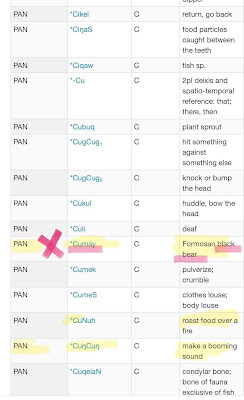

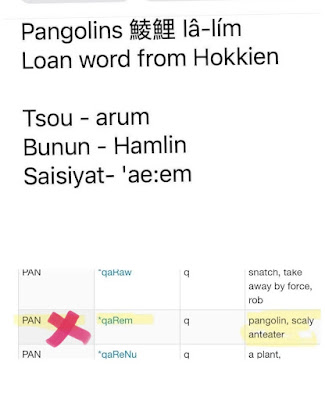

















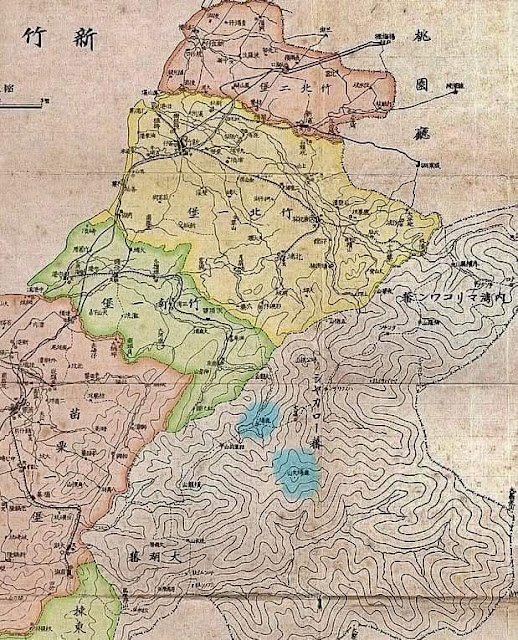
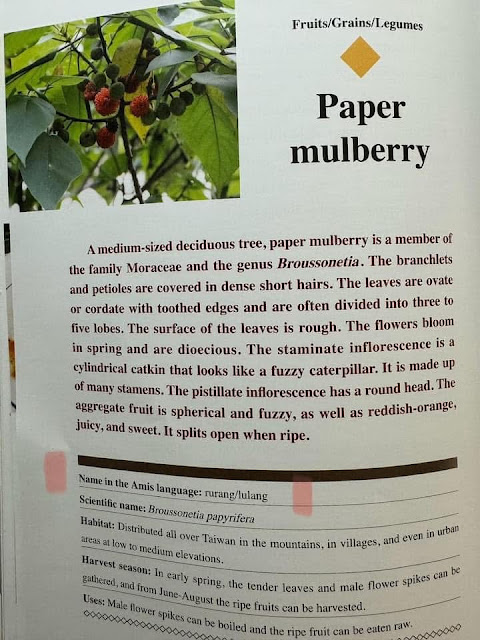
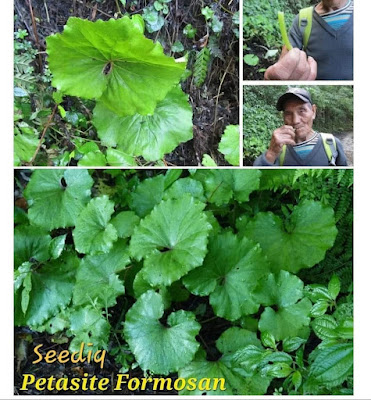

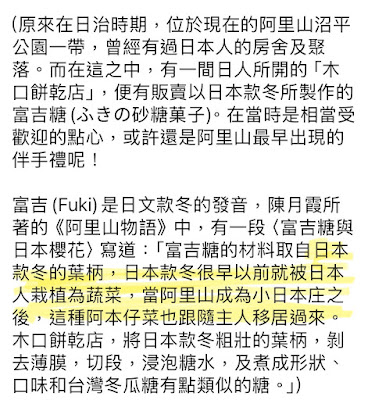





































Comments
Post a Comment